Struggling with Toenail Fungus?
Find Relief and Regain Confidence Today!
Cartersville Foot and Ankle Specialists Laser Therapy
Regain Confidence in Your Feet
No longer feel embarrassed about wearing open-toe shoes, sandals, or going barefoot due to toenail fungus or discoloration. At Cartersville Foot & Ankle Specialists, we are the leading experts in restoring the health and natural, luminous appearance of your nails.
Effective Treatment with Class IV Laser Therapy
Class IV laser therapy stands out as one of the safest and most effective treatments for toenail fungus (onychomycosis). This advanced technology penetrates the nail bed to eradicate the fungus living beneath the nail, offering a painless solution without harmful side effects.
How Laser Therapy Works
When the laser targets the fungal colony under the nail, it disrupts the elements that allow the fungus to grow and thrive. This process destroys the infection, enabling your nail bed to begin producing new, healthy nails—free from discomfort and embarrassment.
Quick and Comfortable Treatment
Laser therapy is a quick and straightforward procedure that allows patients to relax during the treatment. With minimal time and maximum comfort, you can enjoy the benefits of healthier, clearer nails.
Experience the difference with Cartersville Foot & Ankle Specialists and take the first step towards regaining your confidence today!
What is Onychomycosis?
One of the most prevalent types of fungal foot infections directly affects your toenails.
Fungal foot infections can cause significant discomfort and embarrassment. These infections are remarkably common, affecting millions of people annually.
Fungal infections are highly contagious and can be easily contracted through shared bathroom spaces, public locker rooms, showers, pools, and even shared clothing or shoes. Carpeting in communal areas can also harbor fungi, leading to new infections.
For some individuals, a genetic predisposition makes them more susceptible to fungal infections. This genetic factor can complicate treatment, as it increases the likelihood of recurring infections, necessitating more persistent and targeted approaches to effectively manage and prevent reoccurrence.
Understanding Onychomycosis: The Basics of Toenail Fungus
Onychomycosis, commonly known as toenail fungus, is a fungal infection that affects the toenails and sometimes the fingernails.
This condition is characterized by discoloration, thickening, and separation of the nail from the nail bed.
The infection often starts as a white or yellow spot under the tip of the nail and can progress to cause significant changes in the nail’s appearance and structure.
Onychomycosis is caused by various types of fungi, including dermatophytes, yeasts, and molds, which thrive in warm, moist environments.
Causes and Risk Factors
Several factors can increase the risk of developing onychomycosis. These include walking barefoot in damp communal areas such as swimming pools, gyms, and locker rooms, having a history of athlete’s foot, or having a weakened immune system.
Age is also a significant risk factor, as the condition is more common in older adults. Conditions such as diabetes, poor circulation, and a history of nail injuries can further elevate the risk of fungal infections in the nails.
Symptoms and Diagnosis
The symptoms of onychomycosis can vary depending on the severity of the infection. Common signs include a distorted nail shape, a foul smell from the infected nail, and debris buildup under the nail.
In advanced cases, the infected nail may become thickened and brittle, causing discomfort and potential pain when wearing shoes.
Diagnosis is typically made through a physical examination and confirmed by laboratory tests, such as a fungal culture or microscopic examination of nail clippings.
Treatment Options
Treating onychomycosis can be challenging due to the stubborn nature of fungal infections.
Topical antifungal treatments, oral medications, and advanced therapies like Class IV laser treatment are commonly used.
Laser therapy, in particular, has gained popularity due to its ability to penetrate the nail bed and eliminate the fungus with minimal side effects.
Maintaining proper foot hygiene, keeping nails trimmed and clean, and using antifungal sprays or powders can help prevent recurrence and manage symptoms.
Preventive Measures
Preventing onychomycosis involves adopting good foot care practices.
Regularly washing and thoroughly drying your feet, especially after exposure to damp environments, can significantly reduce the risk of infection.
Wearing breathable shoes and moisture-wicking socks, avoiding walking barefoot in public areas, and regularly disinfecting nail grooming tools are also effective preventive measures.
If you suspect an infection, seeking early treatment from a healthcare professional can help manage symptoms and prevent the spread of the fungus.
By understanding onychomycosis, its causes, symptoms, and treatment options, individuals can take proactive steps to maintain healthy nails and prevent fungal infections.
